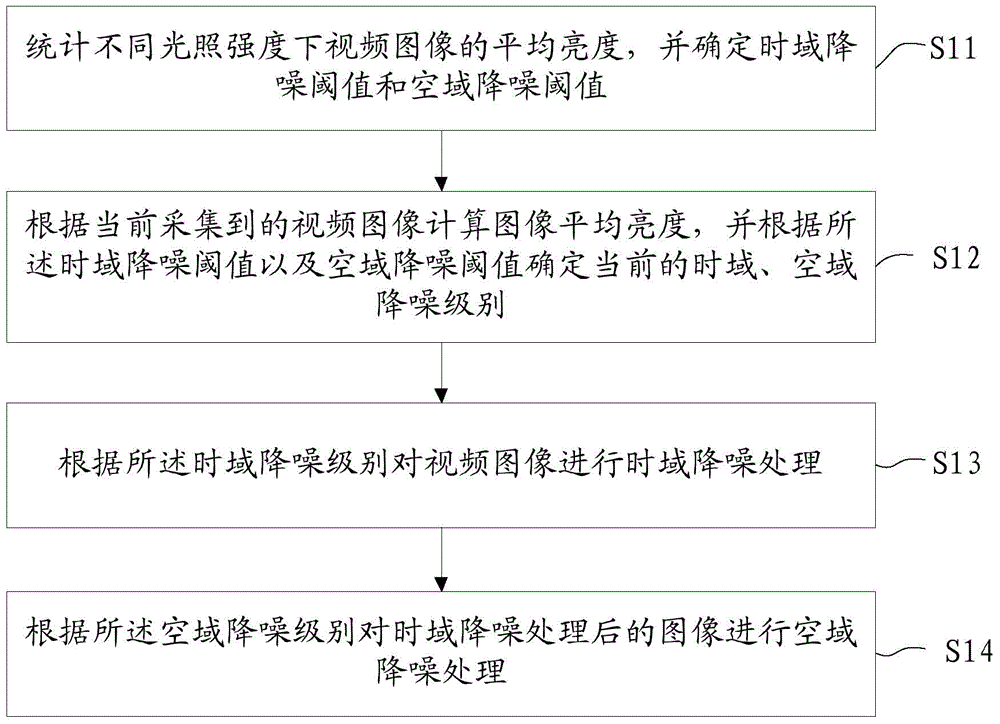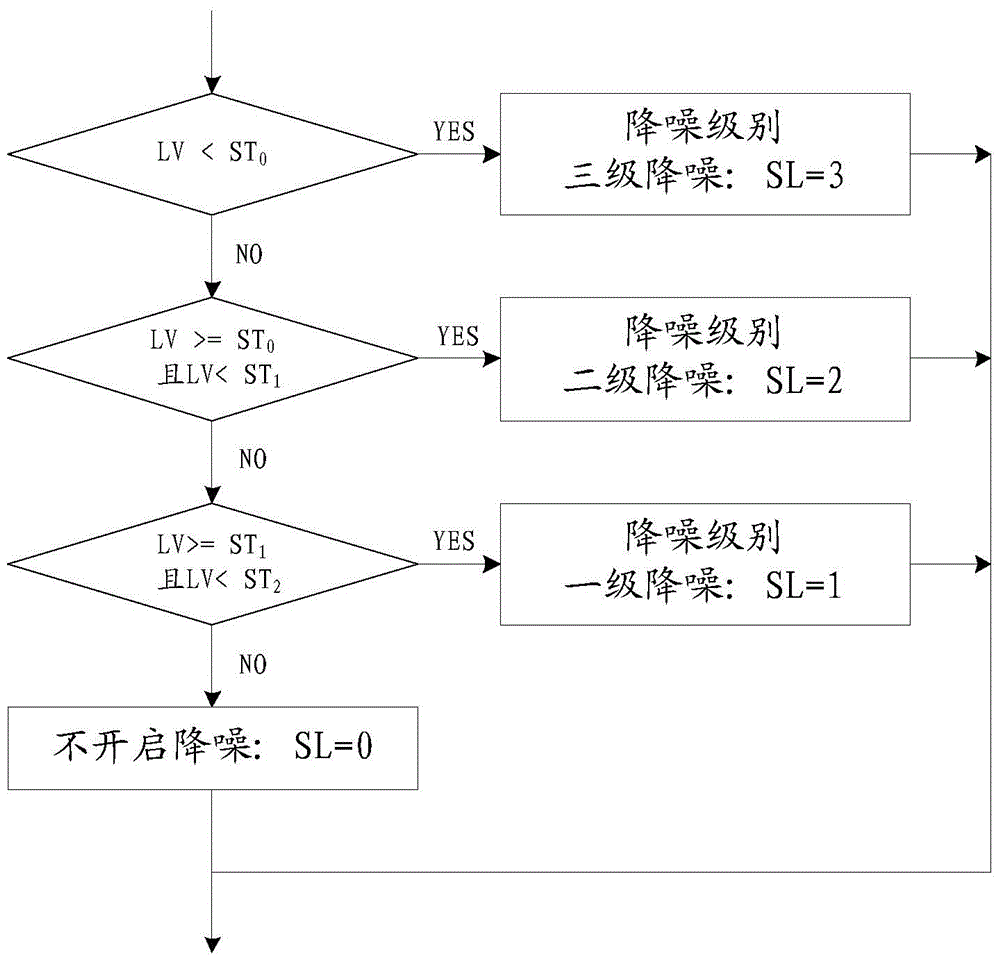Environment self-adaptation video image de-noising method and device
A video image, adaptive technology, applied in the field of image processing, can solve the problems of moving object smear, video image edge blur, etc., achieve good noise reduction effect, solve the effect of edge blur and moving object smear
- Summary
- Abstract
- Description
- Claims
- Application Information
AI Technical Summary
Problems solved by technology
Method used
Image
Examples
Embodiment 1
[0027] figure 1 The flow of the environment adaptive video image noise reduction method provided by the embodiment of the present invention is shown, and only the parts related to the embodiment of the present invention are shown for convenience of description.
[0028] The environment adaptive video image noise reduction method provided in this embodiment includes the following steps:
[0029] Step S11 , counting the average brightness of video images under different light intensities, and determining a temporal noise reduction threshold and a spatial noise reduction threshold.
[0030] In this step, it is first necessary to determine the noise reduction level and the corresponding temporal and spatial domain noise reduction thresholds. According to the actual situation, a range of average brightness of the video image is set for each noise reduction level. During implementation, the corresponding noise reduction level and temporal and spatial noise reduction thresholds are ...
Embodiment 2
[0071] Figure 5 The flow of the environment adaptive video image noise reduction method provided by the embodiment of the present invention is shown, and only the parts related to the embodiment of the present invention are shown for convenience of description.
[0072] The environment adaptive video image noise reduction method provided in this embodiment includes the following steps:
[0073] Step S51, counting the average brightness of the video image under different light intensities, and determining the noise reduction threshold in the temporal domain and the noise reduction threshold in the spatial domain;
[0074] Step S52, acquiring noise reduction mode information, and receiving and saving the input time domain noise reduction level and spatial domain noise reduction level when the noise reduction is manual;
[0075] Step S53, when the noise reduction mode is the automatic mode, calculate the average brightness of the image according to the currently collected video...
Embodiment 3
[0080] Figure 6 The structure of the environment adaptive video image noise reduction device provided by the embodiment of the present invention is shown, and only the parts related to the embodiment of the present invention are shown for convenience of description.
[0081] The environment adaptive video image noise reduction device provided in this embodiment includes:
[0082] Threshold determination unit 61, used to count the average brightness of the video image under different light intensities, and determine the temporal domain noise reduction threshold and the spatial domain noise reduction threshold;
[0083] A noise reduction level determination unit 62, configured to calculate the average brightness of the image according to the currently collected video image, and determine the current temporal and spatial noise reduction levels according to the temporal noise reduction threshold and the spatial noise reduction threshold;
[0084] A temporal noise reduction proce...
PUM
 Login to View More
Login to View More Abstract
Description
Claims
Application Information
 Login to View More
Login to View More - R&D
- Intellectual Property
- Life Sciences
- Materials
- Tech Scout
- Unparalleled Data Quality
- Higher Quality Content
- 60% Fewer Hallucinations
Browse by: Latest US Patents, China's latest patents, Technical Efficacy Thesaurus, Application Domain, Technology Topic, Popular Technical Reports.
© 2025 PatSnap. All rights reserved.Legal|Privacy policy|Modern Slavery Act Transparency Statement|Sitemap|About US| Contact US: help@patsnap.com



